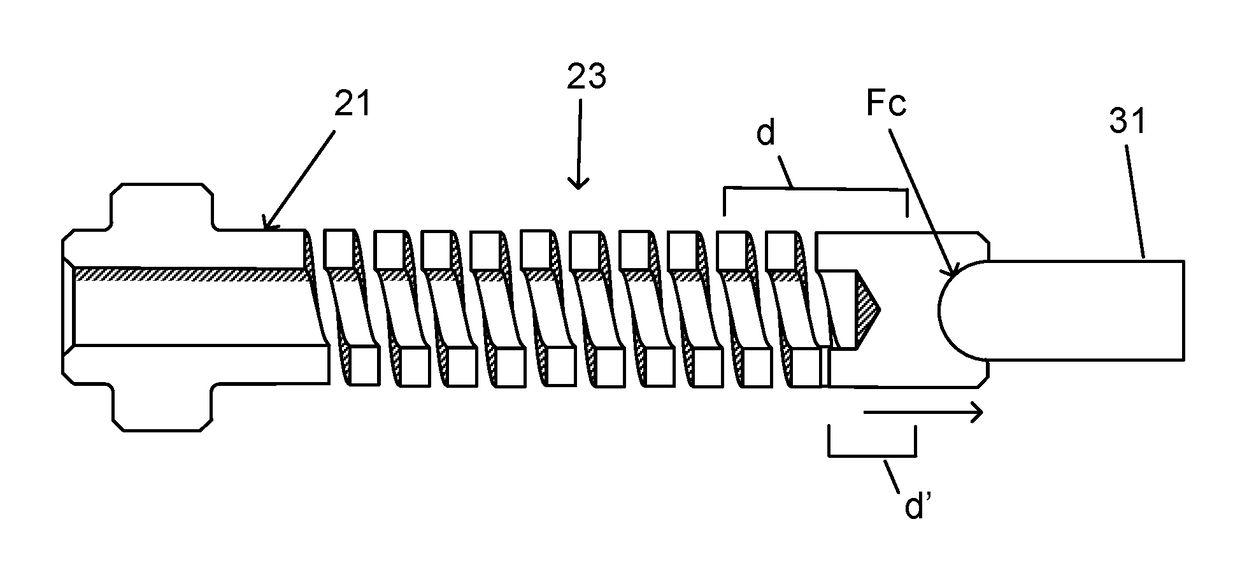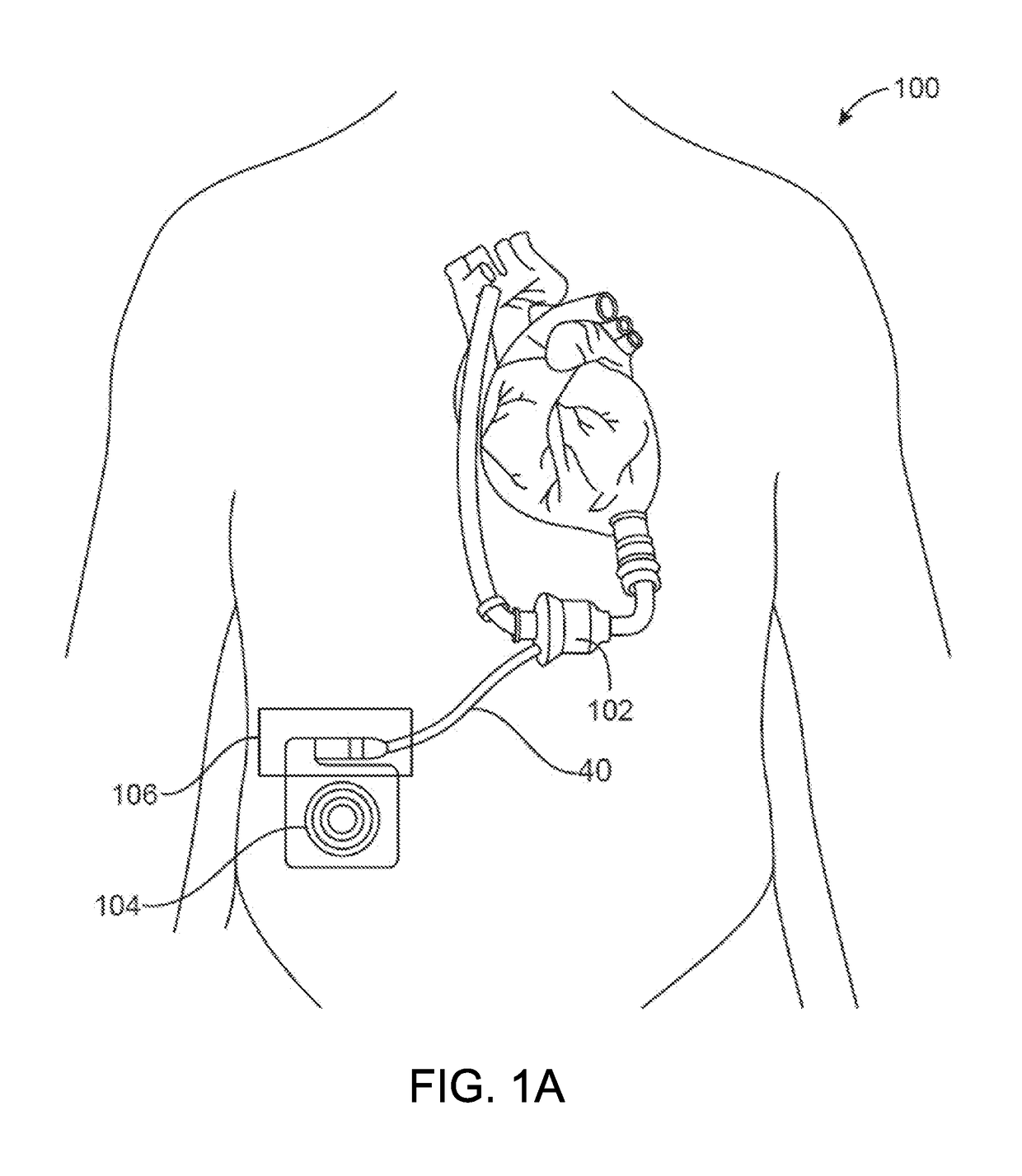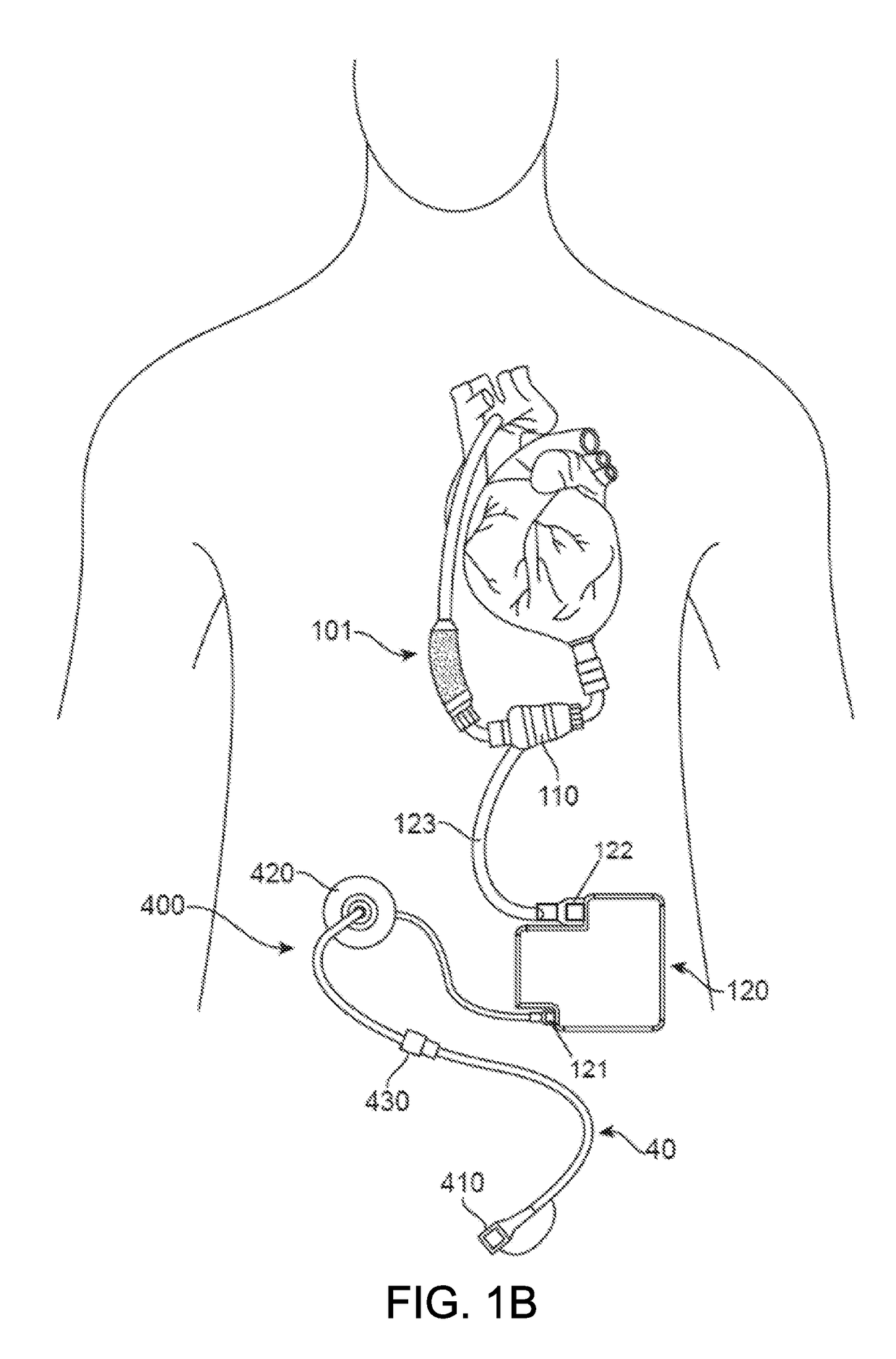Compliant implantable connector and methods of use and manufacture
a technology of implantable connectors and connectors, which is applied in the direction of coupling contact members, coupling device connections, prostheses, etc., can solve the problems of corrosive fluid environment within the human body, general unsuitability of connectors for other implanted medical devices, and difficulty in implanting electrical connectors suitable for higher power requirements within the body. , to achieve the effect of maintaining integrity and longevity of electrical connectors and low yield strength
- Summary
- Abstract
- Description
- Claims
- Application Information
AI Technical Summary
Benefits of technology
Problems solved by technology
Method used
Image
Examples
Embodiment Construction
[0026]The invention relates generally to electrical connectors, and in particular to implantable connectors for use with power cables for powering high-powered implanted medical devices, such as a mechanical circulatory support system or VADs.
[0027]Developing connectors that are implanted in the human body is challenging, particularly for connectors that are designed to be connected and disconnected in a biological environment. The electrical contact set lies at the heart of any connector design. Current research and testing has demonstrated that electrical contacts that are subjected to a biologic environment are susceptible to corrosion—the biggest risk for implantable connector designs. The most robust material to address the corrosion issue in electrical contacts is a blend of a platinum-iridium alloy. Unfortunately, there are considerable challenges associated with use of platinum-iridium alloy for electrical contact designs. This material inherently has certain drawbacks, incl...
PUM
 Login to View More
Login to View More Abstract
Description
Claims
Application Information
 Login to View More
Login to View More - R&D
- Intellectual Property
- Life Sciences
- Materials
- Tech Scout
- Unparalleled Data Quality
- Higher Quality Content
- 60% Fewer Hallucinations
Browse by: Latest US Patents, China's latest patents, Technical Efficacy Thesaurus, Application Domain, Technology Topic, Popular Technical Reports.
© 2025 PatSnap. All rights reserved.Legal|Privacy policy|Modern Slavery Act Transparency Statement|Sitemap|About US| Contact US: help@patsnap.com



